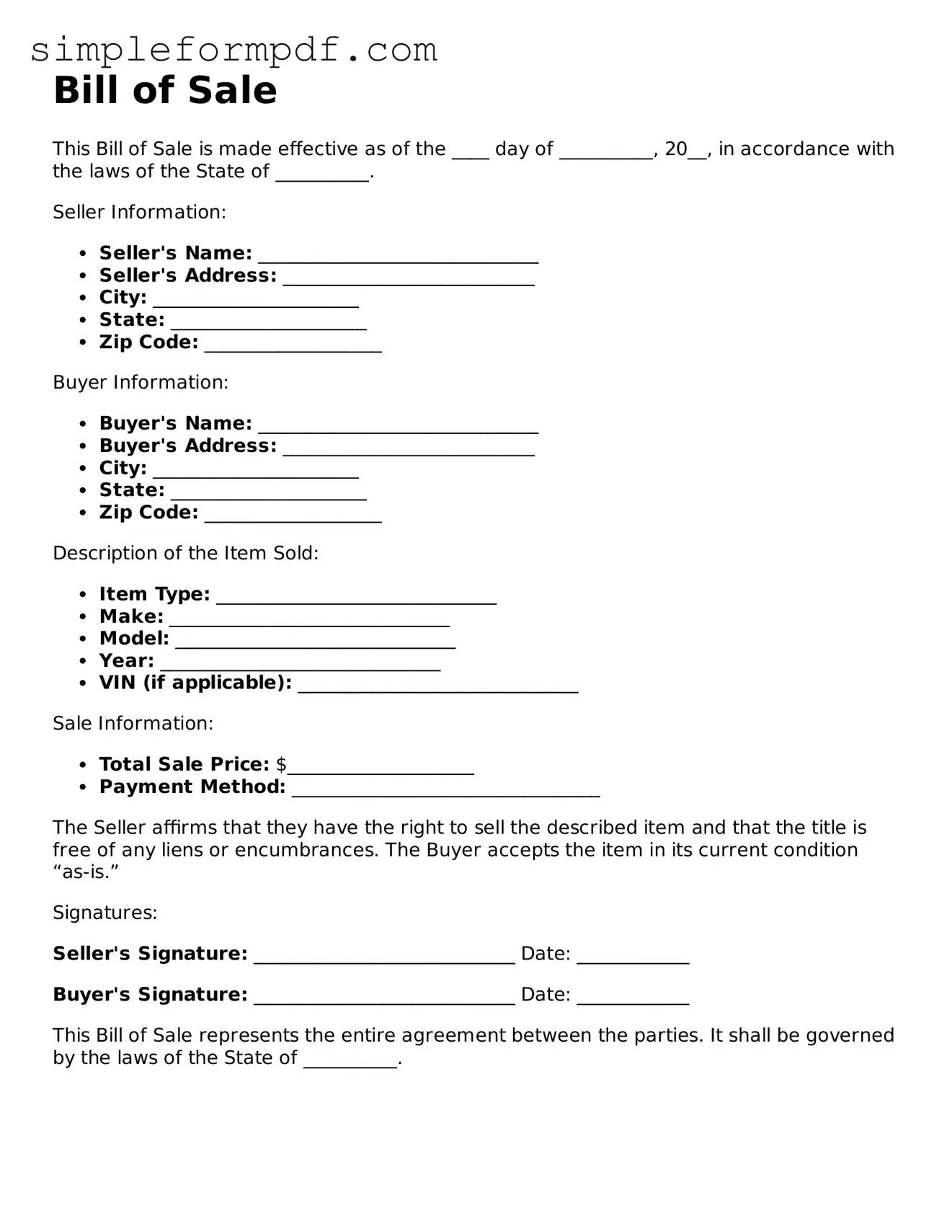Bill of Sale
This Bill of Sale is made effective as of the ____ day of __________, 20__, in accordance with the laws of the State of __________.
Seller Information:
- Seller's Name: ______________________________
- Seller's Address: ___________________________
- City: ______________________
- State: _____________________
- Zip Code: ___________________
Buyer Information:
- Buyer's Name: ______________________________
- Buyer's Address: ___________________________
- City: ______________________
- State: _____________________
- Zip Code: ___________________
Description of the Item Sold:
- Item Type: ______________________________
- Make: ______________________________
- Model: ______________________________
- Year: ______________________________
- VIN (if applicable): ______________________________
Sale Information:
- Total Sale Price: $____________________
- Payment Method: _________________________________
The Seller affirms that they have the right to sell the described item and that the title is free of any liens or encumbrances. The Buyer accepts the item in its current condition “as-is.”
Signatures:
Seller's Signature: ____________________________ Date: ____________
Buyer's Signature: ____________________________ Date: ____________
This Bill of Sale represents the entire agreement between the parties. It shall be governed by the laws of the State of __________.
